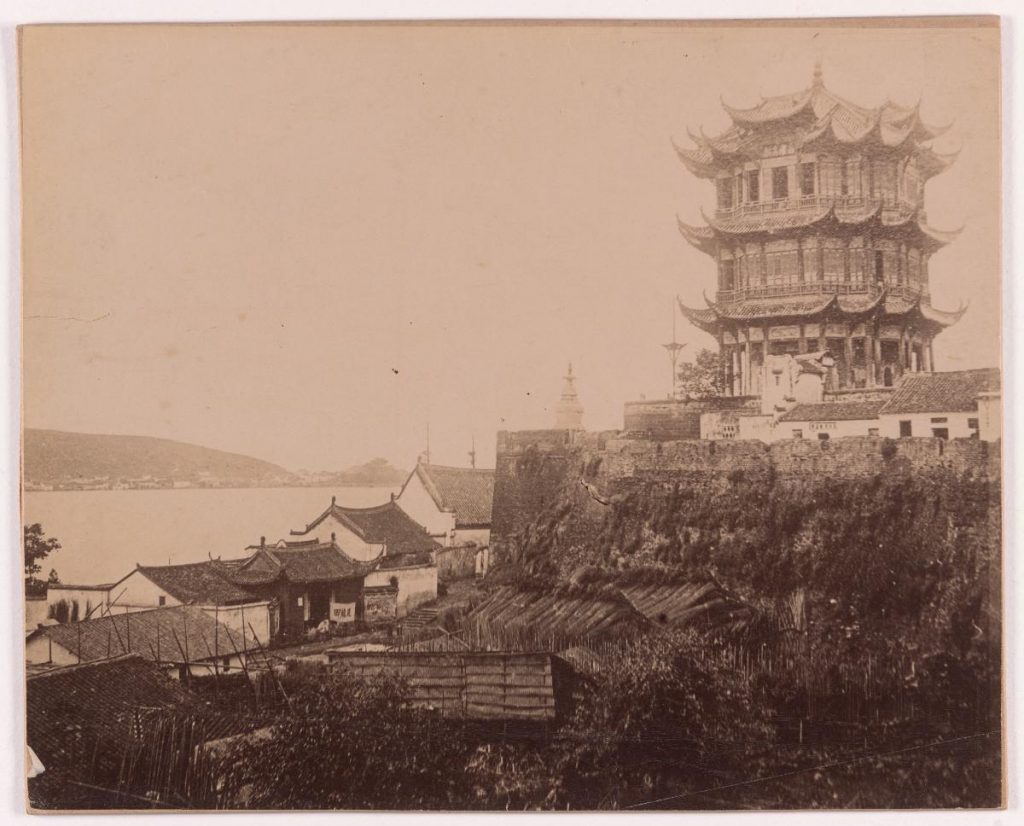img. Wuhan Yellow Crane Tower by Powkee Photographer – Finnish Heritage Agency, Finland – CC BY via Europeana.
Museovirasto (Finnish Heritage Agency) was founded in 1884 and is responsible for protecting environments with cultural history value, archaeological and architectural heritage, and other cultural property. It also collects, studies and presents national collections and both supports and develops the museum field nationally. Museovirasto is funded by Finnish Ministry of Education and Culture. Museovirasto promotes and supports the opening up of cultural heritage material on a larger scale, as well as better availability, easier accessibility and the free use of cultural heritage material. This is done by opening up material and inspiring people to experience and find it. Museovirasto also supports new models and tools for the freer and more versatile use of cultural heritage. Sustainable development, common well-being as well as digitalisation and developing new digital services, new manners of cooperation and our own customer understanding are all in the focus of Museovirasto. Finnish National Digital Library finna.fi is one good example of both digital services and cooperation. National Library of Finland is responsible for Finna and Museovirasto is developing and using it with other GLAM organizations.
China collections at Museovirasto
The National Museum of Finland, which is part of Museovirasto, has in its archaeological, historical, ethnological and ethnographic collections about 2 million objects. Picture Collections of Museovirasto has over 18 million images in its collections. They consist of historical, ethnological, architecture and journalistic picture materials. Ethnographic collections include 40,000 objects and about 200,000 images, collected from every continent, among them some important collections also from China and Central Asia. Some of them were collected already in the 19th century. Best known and most important are the collections of C.G. Mannerheim and the collections of FELM (Finnish Evangelical Lutheran Mission). Mannerheim served as a Colonel in the Imperial Russian Army and was sent to the East as a military intelligence officer in 1906–1908 – on horseback across Central Asia, through Tibetan territory and onwards to Beijing. Mannerheim posed also as a scientist and acquired a sizeable collection of objects from the peoples in the region and took over a thousand pictures. Pictures have already been digitized and can be found also on Europeana. The artefacts of the discontinued Kumbukumbu Museum of the Finnish Evangelical Lutheran Mission (FELM) were added to the ethnographic collections in 2015. They include both objects and about 160,000 images. FELM started its work in China in 1902 and this collection tells both their work as well as their interest in Chinese culture and heritage. The work of FELM in China was concentrated in the Hunan province, but its collection has material also from other provinces and parts of China.
Digitization and use of the collections
Collections are digitized using different cameras and software (mainly Capture One Pro, Adobe Photoshop® and Lightroom®) and digital files and metadata are preserved in the MuseumPlus collection management system. Metadata and files are ingested also to the servers of CSC (IT Center for Science), which preserves cultural heritage for future generations. Museovirasto publishes digitized collections mainly on Finnish national digital library finna.fi, on its own platform museovirasto.finna.fi and on Europeana. Images are published mainly using CC BY licence and most of them can be uploaded freely in high-resolution, best quality files on Finna. Selecting, cataloguing, digitizing and publishing material for PAGODE project would not have been possible without the work and knowledge of Paula Laajalahti, Simo Karisalo, Jaana Onatsu, Terhi Aho and Helena Ojala. Especially Paula did tremendous work mainly voluntarily and spent few years going through over 10,000 images of the FELM collection. Minna Rönkä from the Finna team of the National Library also helped a lot in publishing our PAGODE data set on Europeana
Website: https://www.museovirasto.fi/
PAGODE – Europeana China is co-financed by the Connecting Europe Facility Programme of the European Union, under GA n. INEA/CEF/ICT/A2019/1931839

